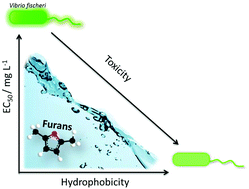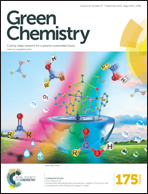Evaluating the toxicity of biomass derived platform chemicals†
Abstract
Furans and their derivatives are well-known chemical building blocks common in plant biomass, and are abundantly used in food, medicines and industrial processes. As a bio-renewable resource, obtainable from the abundant and inexpensive lignocellulosic biomass, there is a growing interest in their study, physico-chemical characterization and application. Due to their biological origin, there is a presumption of low toxicity and high biodegradability for these compounds, which makes them “green” solvents, and thus potential substitutes of the classical organic solvents or oil derived commodities. Surprisingly, their ecotoxicity is poorly characterized. The few studies dealing with the toxicity of furans, namely towards animals, have presented contradictory results. In this work, the toxicity of eighteen furans and their derivatives was evaluated by the Microtox toxicity assay, using the marine bacterium Vibrio fischeri. Different levels of toxicity were observed among the furan derivatives investigated. The results obtained suggest that it might not be adequate to consider furans and their derivatives as “green” solvents as, in general, furans are more toxic than the classical solvents. Nevertheless, more data and studies across more trophic levels are necessary to fully understand the effects of furans on the environment as well as their biodegradability.



 Please wait while we load your content...
Please wait while we load your content...